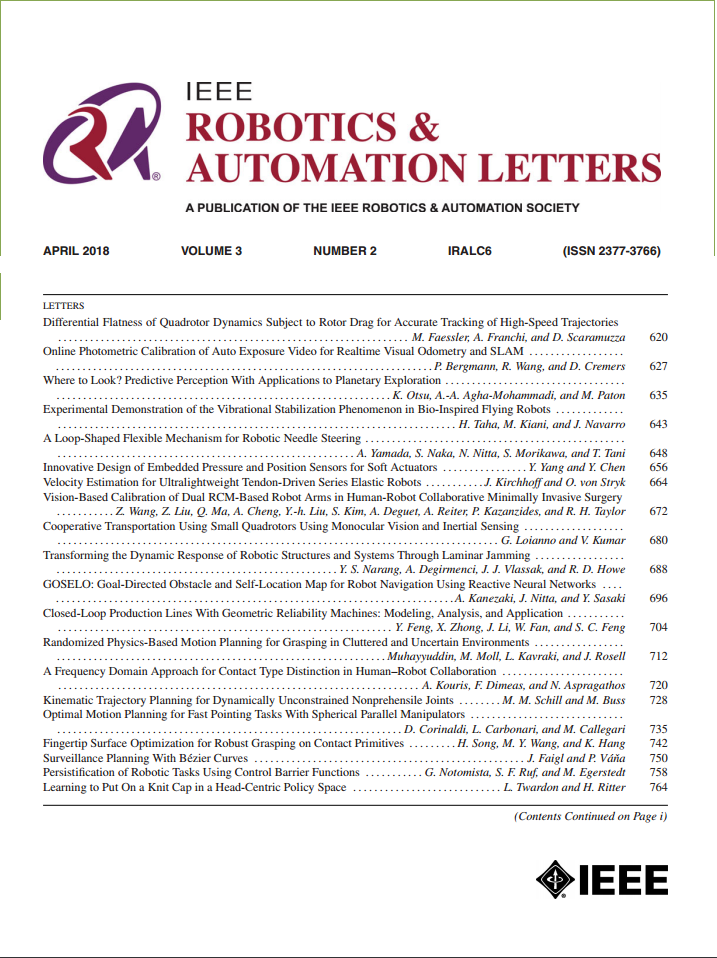A Framework for Adaptive Load Redistribution in Human-Exoskeleton-Cobot Systems
IF 4.6
2区 计算机科学
Q2 ROBOTICS
引用次数: 0
Abstract
Wearable devices like exoskeletons are designed to reduce excessive loads on specific joints of the body. Specifically, single- or two-degrees-of-freedom (DOF) upper-body industrial exoskeletons typically focus on compensating for the strain on the elbow and shoulder joints. However, during daily activities, there is no assurance that external loads are correctly aligned with the supported joints. Optimizing work processes to ensure that external loads are primarily (to the extent that they can be compensated by the exoskeleton) directed onto the supported joints can significantly enhance the overall usability of these devices and the ergonomics of their users. Collaborative robots (cobots) can play a role in this optimization, complementing the collaborative aspects of human work. In this study, we propose an adaptive and coordinated control system for the human-cobot-exoskeleton interaction. This system adjusts the task coordinates to maximize the utilization of the supported joints. When the torque limits of the exoskeleton are exceeded, the framework continuously adapts the task frame, redistributing excessive loads to non-supported body joints to prevent overloading the supported ones. We validated our approach in an equivalent industrial painting task involving a single-DOF elbow exoskeleton, a cobot, and four subjects, each tested in four different initial arm configurations with five distinct optimisation weight matrices and two different payloads.人-外骨骼-协作机器人系统自适应负荷再分配框架
像外骨骼这样的可穿戴设备旨在减轻身体特定关节的过度负荷。具体来说,单自由度或双自由度(DOF)上肢工业外骨骼通常专注于补偿肘关节和肩关节的压力。然而,在日常活动中,不能保证外部载荷与支撑关节正确对齐。优化工作流程,确保外部负载主要(在一定程度上,它们可以由外骨骼补偿)直接指向支撑关节,可以显著提高这些设备的整体可用性和用户的人体工程学。协作机器人(cobots)可以在这种优化中发挥作用,补充人类工作的协作方面。在这项研究中,我们提出了一个自适应和协调的控制系统,用于人-协作机器人-外骨骼相互作用。该系统调整任务坐标,以最大限度地利用所支持的关节。当超过外骨骼的扭矩限制时,框架不断适应任务框架,将过多的载荷重新分配到非支撑的身体关节上,以防止被支撑的关节过载。我们在一个同等的工业喷漆任务中验证了我们的方法,该任务涉及一个单自由度肘关节外骨骼、一个协作机器人和四个受试者,每个受试者在四种不同的初始手臂配置下进行测试,具有五种不同的优化权重矩阵和两种不同的有效载荷。
本文章由计算机程序翻译,如有差异,请以英文原文为准。
求助全文
约1分钟内获得全文
求助全文
来源期刊

IEEE Robotics and Automation Letters
Computer Science-Computer Science Applications
CiteScore
9.60
自引率
15.40%
发文量
1428
期刊介绍:
The scope of this journal is to publish peer-reviewed articles that provide a timely and concise account of innovative research ideas and application results, reporting significant theoretical findings and application case studies in areas of robotics and automation.
 求助内容:
求助内容: 应助结果提醒方式:
应助结果提醒方式:


